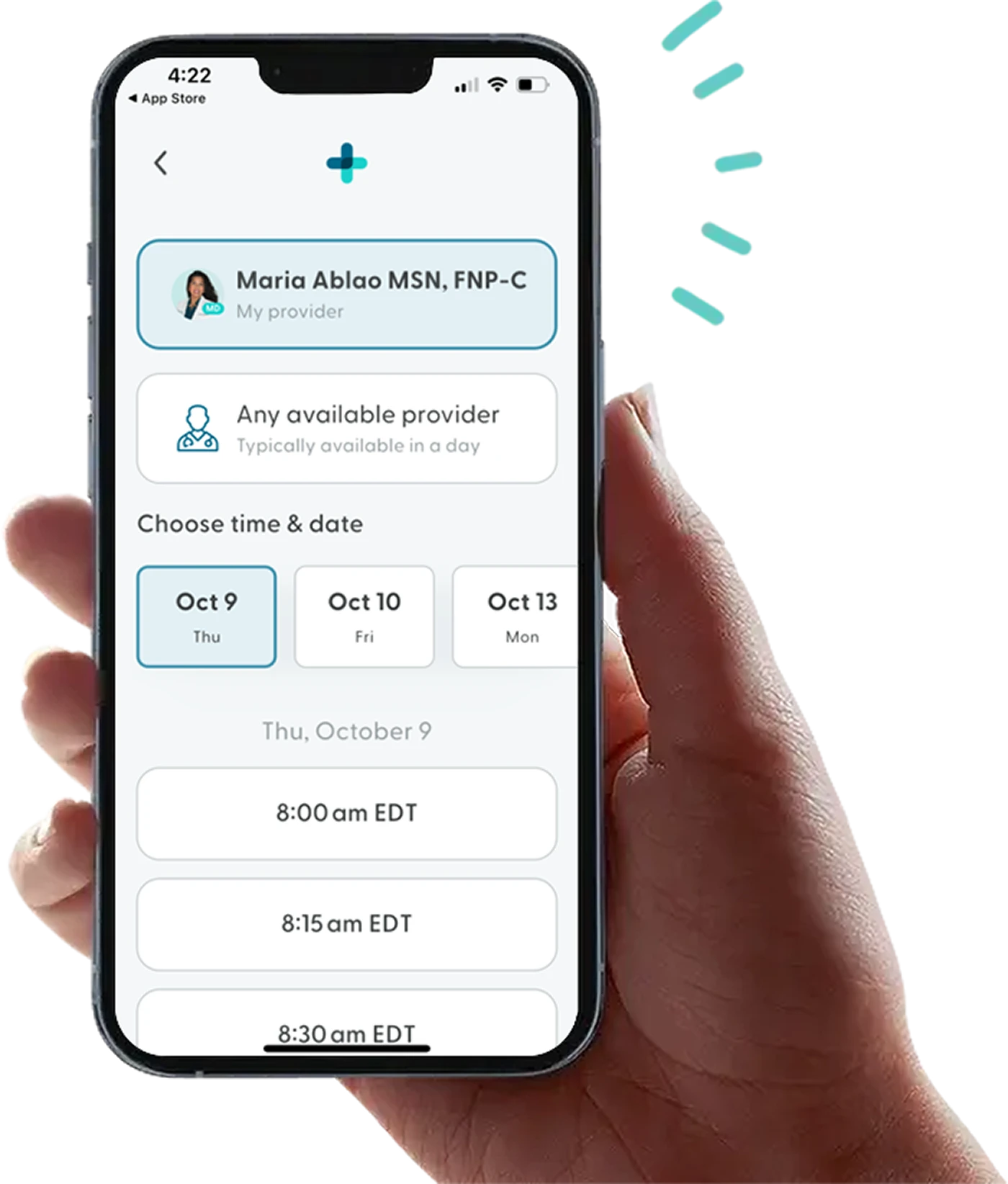What is Estrogen Dominance in Perimenopause?
“Estrogen dominance” gets tossed around a lot on the internet. In perimenopause – the years leading up to the final menstrual period – it rarely means you’re drowning in sky-high estrogen all the time. More often, it means estrogen is sometimes high while progesterone is often low, so the balance tilts toward estrogen’s effects. Understanding that distinction clears up a ton of confusion and helps you choose treatments that actually work.
Estrogen is responsible for many bodily functions, including the development of female reproductive organs, bone growth, and menstrual cycle regulation. In women, estrogen is primarily produced in the ovaries. Estrogen is also used in oral contraception to prevent pregnancy and manage severe menstrual symptoms.
While it’s normal for estrogen levels to swing back and forth between high and low levels, consistently high estrogen levels may be a sign of an increased risk of developing cardiovascular conditions and dementia in some women.
Feel like yourself again
A licensed provider can help you understand your symptoms and determine if hormone replacement therapy is the right next step.


Understanding the Hormone Imbalance Behind Estrogen Dominance
In your 30s and 40s, ovulation often becomes less consistent, which means your body produces less progesterone during the second half of the menstrual cycle. Meanwhile, estradiol (E2) continues to rise and fall – sometimes surging high, other times dropping low. The result is a relative excess of estrogen compared to progesterone, even if total estrogen levels aren’t unusually high.
This imbalance is what’s often referred to as “estrogen dominance” in perimenopause – not an overload of estrogen, but rather estrogen acting without enough progesterone to balance its effects.
What Causes the Imbalance?
Several factors can contribute to hormonal imbalance during perimenopause. Anovulatory cycles – when ovulation doesn’t occur – lead to lower progesterone production, while short luteal phases can limit both the amount and duration of progesterone exposure.
Lifestyle factors such as chronic stress, under-eating, or over-training can also suppress ovulation. Alcohol use, poor sleep, and insulin resistance may further disrupt how estrogen is metabolized. In addition, oral estrogen therapy can raise sex hormone-binding globulin (SHBG), altering hormone balance, whereas transdermal estrogen tends to have fewer of these effects.
Common Signs That Estrogen is “Dominating”
When estrogen’s effects start to dominate, the signs can vary widely from woman to woman. You might notice changes in your menstrual cycle, such as shorter cycles, heavier or clotted bleeding, or unpredictable spotting. Breast tenderness, bloating, and intensified PMS symptoms – like irritability, low mood, anxiety, and disrupted sleep – are also common.
Some women experience headaches or migraines during hormonal swings, or see flare-ups in conditions like fibroids or endometriosis. Sleep often becomes more fragmented, with frequent two to four a.m. wake-ups. It’s important to remember that perimenopause also brings low-estrogen days, which can cause hot flashes, night sweats, or vaginal dryness. The hormonal ups and downs are part of the transition – that rollercoaster is the point.
Is “Estrogen Dominance” Dangerous?
Occasional periods of relative estrogen excess are a normal part of perimenopause. It becomes a concern when those shifts lead to heavy or irregular bleeding, endometrial thickening, or significant quality-of-life disruptions. Sustained high estrogen from other causes is rare and requires medical evaluation – but that’s different from the typical perimenopausal pattern of fluctuating highs and lows combined with low progesterone.
Key Point: Can High Estrogen Levels Affect Fertility?
Researchers have found that higher estrogen levels may affect the process of embryo implantation. Estrogen levels tend to increase throughout pregnancy. Still, researchers need to conduct more research on the causes of infertility in women to understand the role of estrogen leading up to pregnancy.
What Else Causes High Estrogen Levels in Women?
There’s not always a clear-cut answer as to what’s causing estrogen levels to spike. A combination of sudden health changes, diagnosed health conditions, and going through phases of menopause can all affect estrogen levels.
High estrogen (also referred to as estrogen dominance) can occur during puberty and menopause when your hormones may be fluctuating the most.
Women with high estrogen levels may have them as a result of the following:
Taking certain medications
Drinking alcohol heavily
Consistently eating unhealthy foods
Experiencing chronic stress levels
Having obesity
Starting in vitro fertilization (IVF)
Being on birth control pills
What are Normal Estrogen Levels for Women?
When it comes to hormone testing in perimenopause, “normal” lab ranges can be misleading. Estrogen and progesterone levels can fluctuate dramatically – even within the same day – so context matters far more than a single number. Follicle-stimulating hormone (FSH) tends to rise over time as ovarian function declines, while a timed progesterone test about five to seven days after ovulation can confirm whether you’re still ovulating and producing enough progesterone.
There are three main types of estrogen: estrone (E1), estradiol (E2), and estriol (E3). Estradiol is the dominant form during the reproductive years and the one most often measured. Normal estrogen levels in premenopausal women can range anywhere from about 10 to 300 pg/mL, while postmenopausal levels are typically below 10 pg/mL. However, these ranges are only rough guidelines – individual levels can vary based on health, lifestyle, and genetics.
Estradiol (E2) levels will vary, so it’s best to use the same lab assay and track symptoms alongside timing. As a general rule, it’s more effective to treat the person, not just the lab result. It’s also wise to screen for look-alike conditions, including thyroid disorders, iron deficiency, vitamin D deficiency, or elevated prolactin levels if cycles are very irregular.
How are High Estrogen Levels Diagnosed?
Healthcare providers do not consider high estrogen levels a health condition on its own. However, they still use estrogen testing to diagnose certain health conditions and monitor fertility treatments and pregnancy risks.
Healthcare providers can use blood, urine, or saliva samples to see if you have high or low estrogen levels. Healthcare providers may test estrogen levels multiple times to find patterns in estrogen levels.
Blood and urine tests are most often performed in a clinical setting. Alternatively, you can complete a saliva test from the comfort of your home and send it to a lab for testing.
Treating Conditions Associated with High Estrogen Levels
Managing high estrogen levels starts with treating the health conditions causing it. While it’s normal for hormones to fluctuate throughout your life, having symptoms along with high estrogen may indicate a serious health condition. Treatment varies based on which health conditions a healthcare provider is treating.
Women with the following health conditions may also experience high estrogen levels:
Fibroids
Gallbladder disease
Polycystic ovarian syndrome (PCOS)
Liver cancer
Endometrial cancer
Can You Treat High Estrogen Levels?
Managing estrogen and progesterone shifts in perimenopause isn’t about chasing perfect numbers – it’s about creating balance and supporting your body’s natural rhythms.
One of the most effective starting points is supporting progesterone with hormone replacement therapy. Micronized progesterone (taken orally at bedtime) can improve sleep quality, ease breast tenderness, and protect the uterine lining during estrogen surges. For some women, adding transdermal estradiol (in patch, gel, or cream form) under qualified medical supervision can also help smooth out the hormonal highs and lows that drive symptoms – a counterintuitive but well-supported approach. For women who still have a uterus, estrogen should always be paired with adequate progesterone for safety and balance.
Beyond hormones, tending to foundational habits makes a real difference. Prioritize restorative sleep by keeping a consistent wake time, getting morning light exposure, and maintaining a calming nighttime routine.
Manage stress through clear boundaries, breath work, therapy, or by adjusting training loads when needed. Nutrition matters, too. Aim for enough total calories, 1.2–1.6 g/kg/day of protein, 25–30 g of fiber, and plenty of colorful plants. Limit alcohol, as it can worsen sleep, affect estrogen metabolism, and increase bleeding. Keep moving with progressive resistance training and some impact activity for bone health and mood, while avoiding overtraining or chronic fatigue.
Lastly, consider supporting estrogen metabolism with optional adjuncts as guided by your healthcare provider – an approach that can complement lifestyle and hormonal therapies for smoother hormonal transitions.
Lifestyle Factors Affecting High Estrogen Levels
There are ways to manage hormonal imbalances in your daily life. Daily habits like working out consistently and eating a healthy, well-balanced diet may improve drastic hormonal imbalances.
While it’s not always guaranteed, incorporating the following habits may help improve estrogen levels:
Maintaining a healthy weight
Incorporating stress management techniques
Following a high-fiber diet
Avoid drinking alcohol excessively
Increasing your calcium intake
Reducing your intake of highly processed foods
Be sure to speak with a healthcare provider before taking any medications or supplements to lower estrogen levels. They can help develop a treatment plan for you to address any health issues that may contribute to a hormonal imbalance.
Where Can I Learn More About Managing Hormonal Imbalances?
In perimenopause, “estrogen dominance” usually reflects fluctuating estrogen levels combined with low progesterone – a relative imbalance that’s both common and manageable. The goal isn’t to chase a perfect estradiol number, but to stabilize symptoms, protect the uterus, and support sleep, mood, bone, and brain health with the lowest effective intervention. For many women, that means micronized progesterone (cyclic or continuous), carefully dosed transdermal estradiol when appropriate, and a strong foundation of healthy daily habits.
LifeMD can help you understand any health changes you may experience in your daily life associated with hormonal imbalances.
The LifeMD Women’s Health Program offers compassionate, personalized care for women based on your individual needs and concerns. LifeMD-affiliated healthcare providers can help women entering menopause and managing other common women’s health conditions come up with a treatment plan.
Get started today to see if you qualify.
More articles like this
Feel better with LifeMD.
Your doctor is online and ready to see you.
Join LifeMD for seamless, personalized care — combining expert medical guidance, convenient prescriptions, and 24/7 virtual access to urgent and primary care.

HRT Support
Talk with a provider about whether hormone replacement therapy is right for you.
Get Started Now
 Medically reviewed and edited by
Medically reviewed and edited by 






